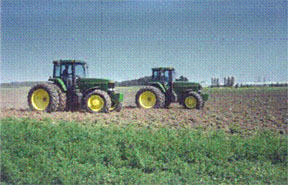– Christine Gelley, Agriculture and Natural Resources Educator, Noble County OSU Extension
Poison hemlock has already emerged in a vegetative state around Noble County and beyond. Soon it will be bolting and blooming on stalks 6-10 feet tall. All parts of the plant are toxic to all classes of livestock if consumed and is prevalent along roadsides, ditches, and crop field borders. It is a biennial weed that does not flower in the first year of growth but flowers in the second year. The earlier you can address poison hemlock with mowing and/or herbicide application, the better your control methods will be.

Poison hemlock is a concern in public right of ways, on the farm, and in the landscape!
Poison hemlock is related to Queen Anne’s lace, but is much larger and taller, emerges earlier, and has purple spots on the stems. Another relative that is poisonous is wild parsnip, which looks similar to poison hemlock, but has yellow flowers. Giant hogweed is another relative of poison hemlock that is also toxic. All of these plants have umbel shaped clusters of flowers.
